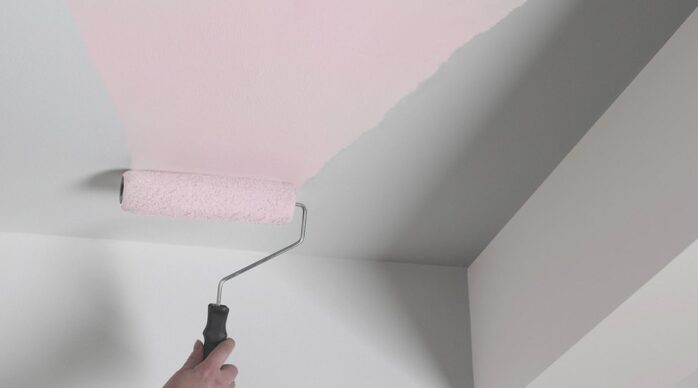Ceiling paint is an essential part of any painting project. It provides a protective barrier between the painted surface and the elements, and it can also add colour and style to a room.
In this article, we will discuss the different types of ceiling paint available as well as the best way to apply it. Better keep all these in mind when you go searching for the best ceiling paint for your needs.
How important is ceiling paint?

Ceiling paint is important for several reasons. First, it helps protect the surface of your ceiling from weather damage, such as wind and rain. It also prevents mould and mildew from developing on the painted surface.
In addition, ceiling paint can brighten up a room and make it feel more spacious. A coat of white or light-coloured paint will reflect light back into the room, making it appear brighter. This is especially helpful in small rooms or rooms with low ceilings.
Finally, ceiling paint can add style to a room. If you want a more formal look, you can choose a dark colour, such as charcoal grey or navy blue. If you want a more relaxed atmosphere, you can choose a light colour, such as pastel blue or green. No matter what your style, there is ceiling paint that will suit your needs.
What are the different types of ceiling paint?
There are two main types of ceiling paint: water-based and oil-based. Water-based ceiling paints are easier to clean up and are less likely to yellow over time. They also dry more quickly than oil-based paints, so you can usually recoat the surface in just a few hours.
Oil-based ceiling paints provide better coverage and are more durable than water-based paints. They can also be used on surfaces that have been previously painted with an oil-based paint. However, oil-based paints take longer to dry, and they can be more difficult to clean up.
When choosing ceiling paint, it is important to consider the type of finish you want. Flat finishes are best for hiding imperfections in the ceiling surface, while semi-gloss and high-gloss finishes will reflect more light and make the room appear brighter.
How do you apply ceiling paint?

Before you begin painting, you will need to prepare the surface of your ceiling. First, make sure to remove any loose paint or debris from the surface. Then, use a sanding block to lightly sand the entire surface. This will create a smooth surface for the new paint to adhere to.
Once the surface is prepared, you can proceed to paint. When painting a ceiling, it is best to use a roller with an extension handle. This will allow you to reach the entire surface without having to climb on a ladder.
Start by painting the edges of the ceiling first, then roll the paint onto the rest of the surface. To avoid leaving brush strokes, be sure to load the roller with enough paint and roll it in a zig-zag pattern. When the first coat dries, apply a second coat if necessary.
Summary
Ceiling paint is truly an important part of any painting project. It provides a protective barrier against weather damage and mould and it can also brighten up a room and add style to it. When choosing a ceiling paint, consider the type of finish you want and the type of paint you prefer. Make sure to buy the best ceiling paint for your needs to ensure the best results!



















